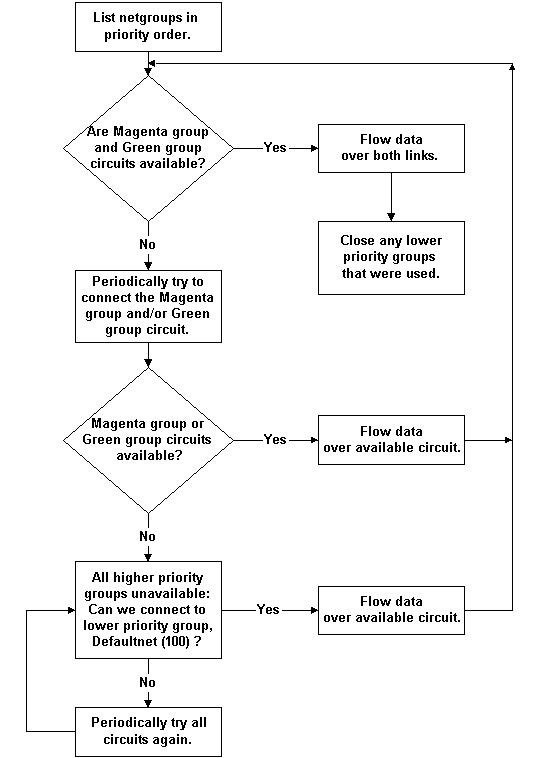


|

|
|
|
|
How Data Moves Over Parallel Networks
In a distributed application there are several advantages to using parallel data circuits for sending data across the network:
Before making a decision to use parallel data circuits, however, you should determine whether it will be important, in your application, for messages to be kept in sequence. The system guarantees that conversational messages are kept in the correct sequence by binding the conversation connection to one particular data circuit.
If your application will require all messages to be kept in sequence, you must program the application to keep track of the sequence for nonconversational messages. If you are using this approach, you may not want to configure parallel data circuits.
The following figure describes how data flows when one machine tries to contact another. The figure is based on a sample scenario involving two machines: machine A and machine B. First, the BRIDGE identifies the network groups that are common to both machines: the MAGENTA_GROUP, the GREEN_GROUP, and the DEFAULTNET.
Data flows in parallel on network groups with the same priority (that is, groups for which the same value is assigned to the NETPRIO parameter). Network groups with different priorities are used for failover.
Flow of Data over the BRIDGE


|

|

|
|
|
|
Copyright © 2000 BEA Systems, Inc. All rights reserved.
|